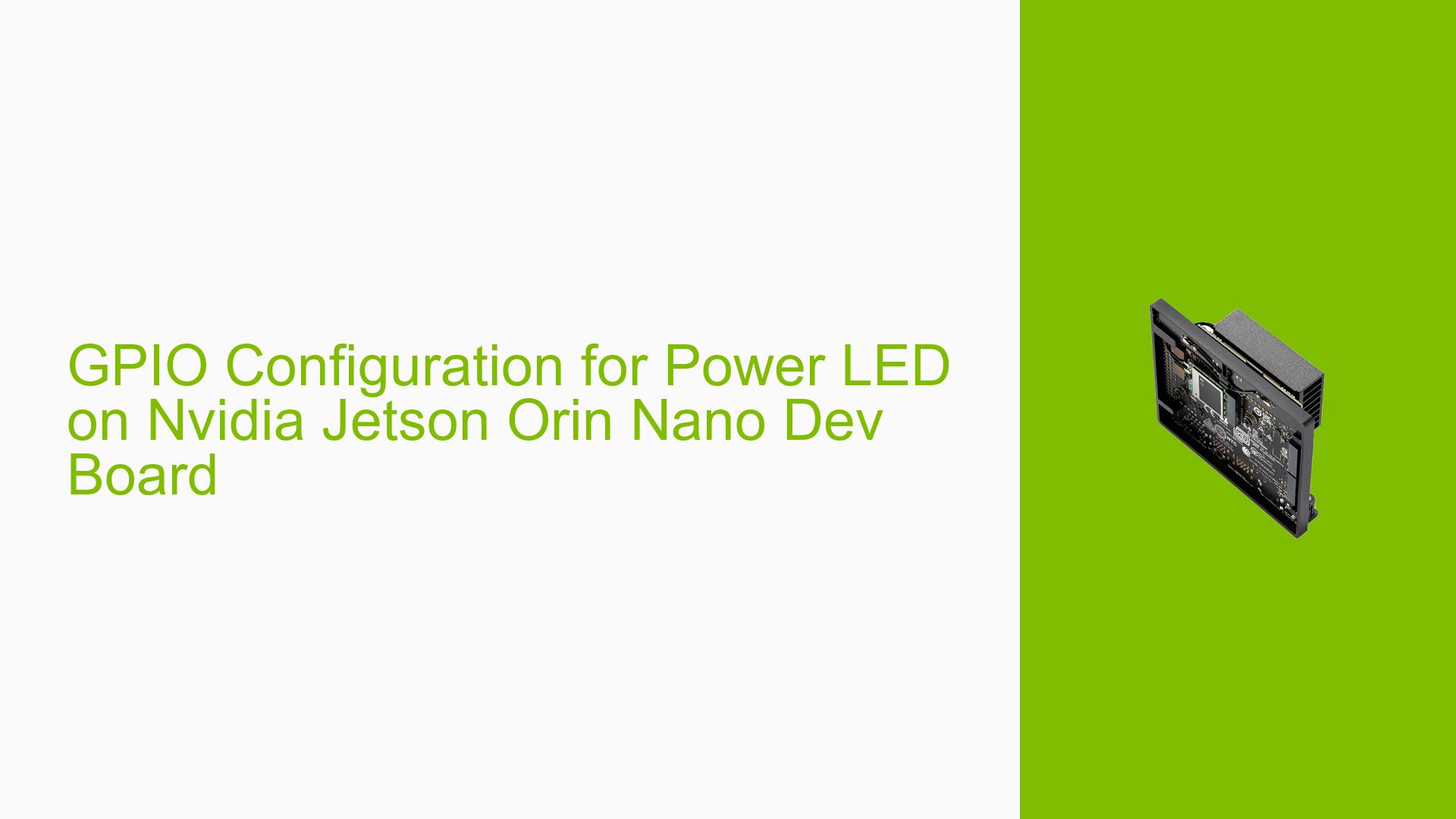GPIO Configuration for Power LED on Nvidia Jetson Orin Nano Dev Board
Issue Overview
Users of the Nvidia Jetson Orin Nano Development Kit have been seeking clarification on the configuration and control of a specific GPIO pin. The pin in question is related to the baseboard power LED control. Initially, there was confusion about its location and functionality, as it was observed being configured as an output with a default high state in certain device tree source files.
Possible Causes
-
Lack of Documentation: The specific GPIO pin’s function and location may not be clearly documented in the standard user manuals, leading to confusion.
-
Complex Pin Multiplexing: The Jetson Orin Nano’s pin multiplexing system can be intricate, making it challenging to trace the connection between software configurations and physical pins.
-
Inconsistent Naming Conventions: Different parts of the system (hardware, software, documentation) may use varying naming conventions for the same pin, causing misunderstandings.
Troubleshooting Steps, Solutions & Fixes
-
Identify the GPIO Pin:
- The GPIO in question is identified as GPIO04 or GPIO3_PCC.01.
- It corresponds to SODIMM Pin 127 on the Jetson Orin NX and Nano.
- Its function is designated as "Baseboard Power LED Control" in the development kit.
-
Locate the Physical LED:
- The power LED controlled by this GPIO is located near the USB port on the development board.
-
Control the LED via Command Line:
To toggle the LED state, use the following command:sudo gpioset --mode=wait gpiochip1 13=0This command sets the GPIO to a low state, which should turn off the LED.
-
Determine the GPIO Line Number:
If you need to confirm the correct GPIO line number, use:sudo gpioinfo 1This command will provide information about the GPIO chip, including the line number (which is 13 in this case).
-
Understanding Device Tree Configuration:
- The GPIO is configured in the device tree source files located in the Linux_for_Tegra/bootloader directory.
- Relevant files include:
- tegra234-mb1-bct-gpio-p3767-hdmi-a03.dtsi
- tegra234-mb1-bct-pinmux-p3767-hdmi-a03.dtsi
-
Pin Configuration Details:
The pin is configured with the following properties:- Function: rsvd1 (reserved)
- Pull: TEGRA_PIN_PULL_NONE (no pull-up or pull-down)
- Tristate: TEGRA_PIN_DISABLE (output enabled)
- Input: TEGRA_PIN_DISABLE (input disabled)
-
Best Practices:
- Always refer to the latest pinmux documentation for your specific Jetson Orin model.
- Use the provided command-line tools (gpioset, gpioinfo) to interact with and gather information about GPIOs.
- When modifying GPIO states, be cautious and ensure you understand the impact on the system.
By following these steps and understanding the configuration, users can effectively control the baseboard power LED on their Nvidia Jetson Orin Nano Development Kit.
